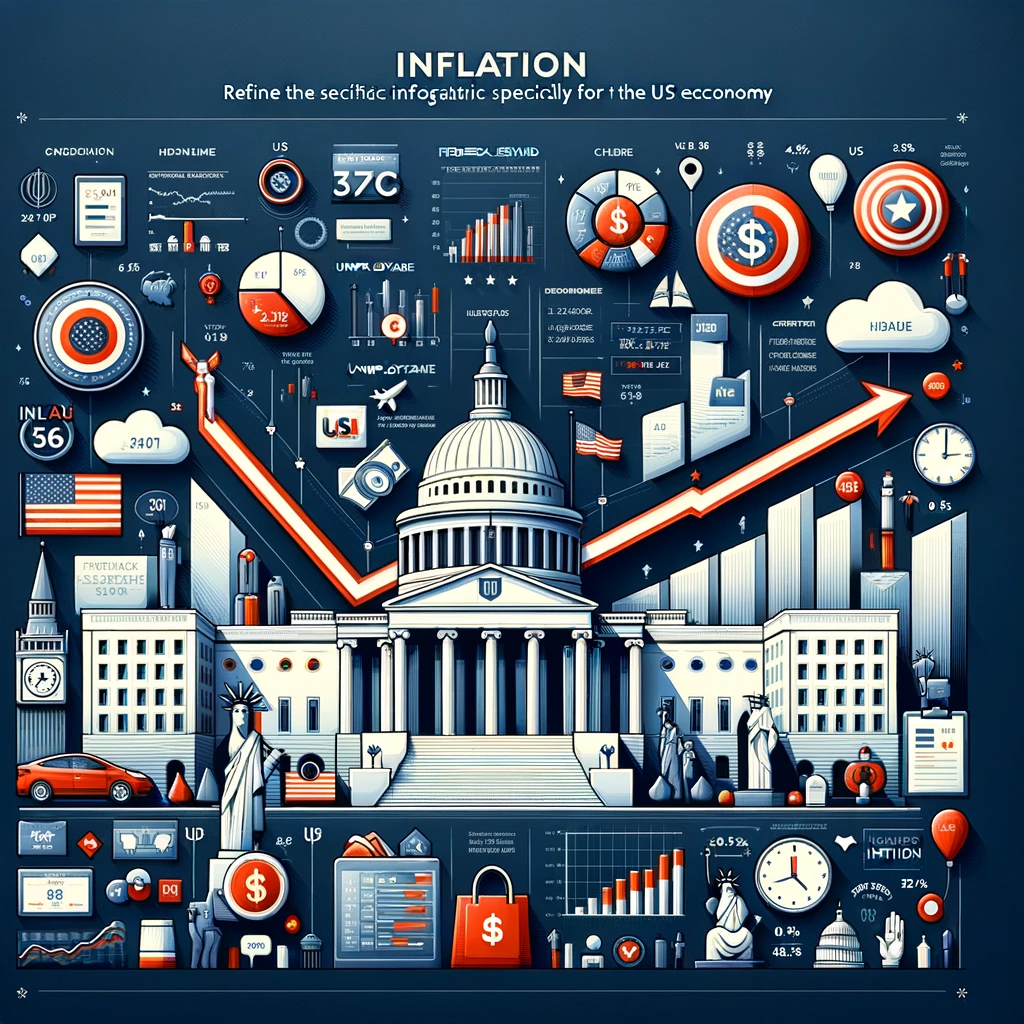Inflation Trends and Expectations: 2023 Review and February 2024 Insights
2024-01-01

CPI Trends in U.S. City Average Show Sign of Inflation Moderation in 2023
The latest monthly data on the Consumer Price Index (CPI) for All Urban Consumers All Items in U.S. City Average shows some noteworthy trends. In March 2023, the year-over-year change in CPI was 4.9%, and this rate remained relatively stable through the following months of April and May. However, a pronounced shift occurred in June, with the year-over-year change dropping to 2.9%. This decline was followed by a slight increase in July and August, before leveling off at 3.2% in October and November 2023. It's evident that there has been a significant deviation from the extremely high inflation rates reported earlier in the year, particularly in comparison to the double-digit inflation rates experienced in 2022. The average year-over-year change in the CPI for 2023 stands at 4.2%, indicating a decrease from the peak of 6.6% reported in January 2023. This change in the CPI trend could potentially signal a slowdown in inflationary pressures. The gradual decrease in year-over-year changes from March to November indicates a moderation in the overall price level across a broad range of consumer goods and services. While it's important to remain cautious and monitor future data, this shift could potentially alleviate concerns about sustained high inflation. However, it's crucial to remember that economic indicators can be influenced by a multitude of factors, and the U.S. Federal Reserve and other economic analysts will closely monitor the CPI data for further insights into the trajectory of inflation. The context provided by the longer-term perspective shows the significance of the recent inflationary fluctuations. The data-driven analysis provides a clear understanding of the current inflationary environment and the potential implications for the broader economy.
Sharp Decline in Sticky Price Consumer Price Index Indicates Potential Deflationary Trend
The Sticky Price Consumer Price Index, which tracks goods and services with relatively stable prices, has shown a notable trend in the last year. In December 2022, the year-over-year change stood at a high 88.9%, indicating significant inflationary pressure. However, this trend shifted drastically in the following months, with January 2023 seeing a decrease to 64.6%, and a sharp decline to 33.9% by April 2023. This rapid deceleration continued, reaching 3.7% in June 2023 and turning negative in July 2023 at -3.1%. This deflationary trend persisted, with the year-over-year change hitting -26.9% in November 2023. These figures are quite striking when compared to the average year-over-year changes of previous years, notably the soaring 130.2% in 2022 and the relatively muted 11.9% in 2023. This dramatic downturn in the Sticky Price CPI suggests a substantial deceleration in price growth for goods and services with infrequently adjusted prices. While these data points provide clear evidence of a significant cooling in inflation, it's essential to take a cautious stance as the broader implications on U.S. inflation dynamics could be multi-faceted.
University of Michigan's Monthly Inflation Expectations Fluctuate Significantly in 2023
The latest monthly data on the University of Michigan's inflation expectations, specifically the median expected price change over the next 12 months, reveals some notable fluctuations over the past year. In January 2023, the expected price change was 3.9%, which increased to 4.1% in February, and then experienced a decrease to 3.6% in March. However, April saw a significant uptick to 4.6%, followed by a slight decrease to 4.2% in May. The trend then reversed sharply in June, dropping to 3.3%, and continued to decrease in July at 3.4% and August at 3.5%. The trend hit its lowest point in December 2023 at 3.1%. Despite the fluctuations, the general trend over the year indicates a level of uncertainty and fluctuation in inflation expectations. The sudden spikes in April and May, followed by a steep decline in the following months, could suggest some volatility and lack of consensus among consumers regarding future inflation. Such fluctuations can have implications for consumer spending, investment decisions, and overall economic planning. Additionally, these shifts may also influence the Federal Reserve's monetary policy decisions in its efforts to manage inflation and stabilize the economy. It's essential to closely monitor these inflation expectations as they can have real-world impacts on financial markets, interest rates, and overall economic stability.
February 2024 Breakeven Inflation Rate Data Reveals Moderate Expected Rates Across Multiple Time Horizons
The latest monthly data on the Breakeven Inflation Rate (Federal Reserve Bank of St. Louis) for February 2024 indicates the following rates: 5-Year at 2.35%, 10-Year at 2.3%, and 30-Year at 2.4%. The breakeven inflation rate serves as a gauge of anticipated inflation, computed from the variance between Treasury Constant Maturity Securities and Treasury Inflation-Indexed Constant Maturity Securities. These figures provide insight into market expectations regarding inflation over the aforementioned time horizons. The data suggests a consistent, yet moderate, expected inflation rate across the different maturity periods. It is crucial for policymakers, investors, and financial analysts to consider these expectations in their decision-making processes, as inflation anticipation profoundly impacts economic and financial dynamics.
Federal Reserve Bank of Cleveland's Expected Inflation Trend Analysis for Various Time Horizons
The latest monthly data on expected inflation, as estimated by the Federal Reserve Bank of Cleveland, reveals an upward trend across various time horizons. The expected inflation rates for 2023-12 are as follows: 1-Year: 3.1%, 2-Year: 2.7%, 5-Year: 2.36%, and 10-Year: 2.27%. These figures suggest an anticipation of higher inflation in the near term, gradually moderating over the 5 and 10-year periods. The model used by the Cleveland Fed incorporates a comprehensive set of inputs including Treasury yields, inflation data, inflation swaps, and survey-based measures of inflation expectations. It's essential to monitor these inflation expectations closely as they can influence consumer behavior, monetary policy decisions, and market dynamics.
